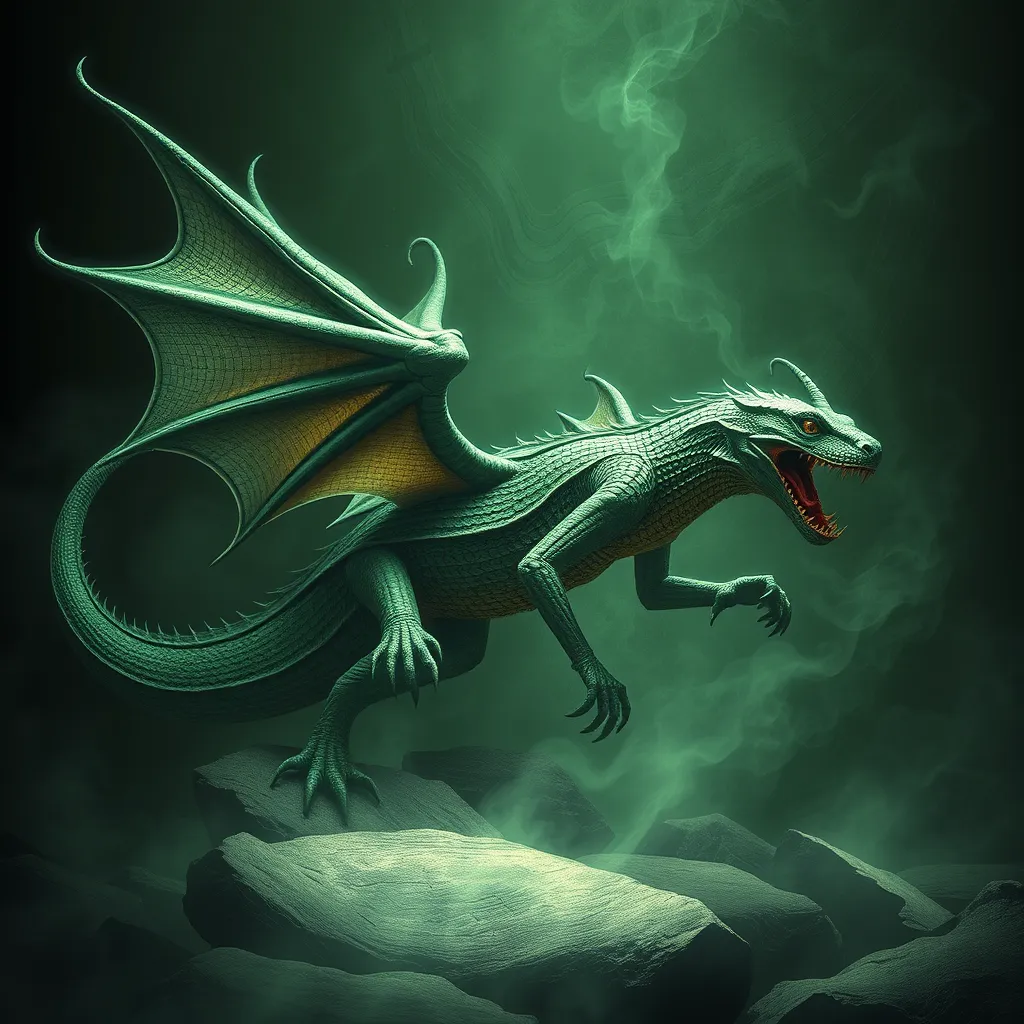The Hungry Spirits of the Desert: Examining the Ghoul and its Role in Middle Eastern Folklore
I. Introduction
The ghoul is a fascinating creature rooted deeply in Middle Eastern folklore. Traditionally depicted as a malevolent spirit that feeds on human flesh, the ghoul embodies the fears and anxieties of the desert’s unforgiving landscape. Ghouls are significant not only as terrifying figures in stories but also as symbols of deeper cultural narratives that reflect societal values and fears.
This article aims to explore the role and symbolism of ghouls in Middle Eastern folklore, examining their origins, characteristics, manifestations in tales, and their continuing relevance in contemporary culture.
II. Historical Origins of the Ghoul
The term “ghoul” originates from the Arabic word “غول” (ghul), which refers to a creature that devours the dead. The first known references to ghouls can be traced back to the early Arabic literature of the 8th century, particularly in the “One Thousand and One Nights” (or “Arabian Nights”).
Ghouls have connections to ancient myths and desert spirits, drawing on the harsh realities of desert life where survival often hinged on understanding the dangers lurking in the shadows. The concept of the ghoul has evolved through various cultures, merging with local legends and imbuing the creature with different characteristics and meanings.
III. Characteristics of the Ghoul
Ghouls are typically portrayed as grotesque, undead beings that have an insatiable appetite for human flesh. They are often described as having:
- Sunken eyes and decaying skin
- Sharp claws and fangs
- A hunched posture, which adds to their menacing appearance
In terms of behavior, ghouls are known for their cunning and deceptive tactics, often luring unsuspecting travelers into isolated areas where they can attack. Common stories associated with ghouls often involve themes of trickery and the violation of sacred spaces, reinforcing their role as harbingers of danger.
It is essential to distinguish ghouls from other supernatural entities in folklore, such as jinn, which are more diverse in nature and can be both benevolent and malevolent. In contrast, ghouls are primarily associated with death and the darker aspects of existence.
IV. The Ghoul in Folktales and Legends
Numerous folktales feature ghouls, illustrating their role in traditional narratives. Some notable stories include:
- The tale of “The Fisherman and the Jinni,” where a ghoul is contained within a bottle, illustrating the theme of captivity and danger.
- The “Story of the Ghoul,” where a traveler encounters a ghoul and learns a valuable lesson about trust and caution.
In many of these tales, ghouls serve as cautionary figures, warning against the dangers of straying from the path or indulging in excess. The role of ghouls in folktales often emphasizes moral lessons and the importance of adhering to cultural norms.
Regional variations of ghoul stories exist throughout the Middle East, reflecting local customs and values. For instance, in some cultures, ghouls may be associated with specific geographical features, such as abandoned ruins or graveyards, enhancing the eerie atmosphere of these narratives.
V. Symbolism and Cultural Significance
The ghoul symbolizes fear and danger, particularly in the barren deserts where survival is a constant struggle. This representation of ghouls highlights the trepidation surrounding death and the unknown, as they are seen as guardians of the grave.
Moreover, ghouls connect to themes of hunger and survival, representing the primal instinct to feed and the desperation that can arise in dire situations. This symbolism resonates deeply within cultures that have historically faced harsh living conditions.
Additionally, the ghoul reflects societal anxieties and taboos, embodying the fears of societal collapse, moral decay, and the consequences of straying from accepted norms. As such, ghouls serve as a mirror, reflecting collective fears and the consequences of human actions.
VI. The Ghoul in Modern Media
In contemporary literature and film, ghouls have taken on new forms while retaining their core attributes. Modern adaptations often portray ghouls in horror genres, showcasing their terrifying nature and reinforcing their role as malevolent beings. Examples include:
- The portrayal of ghouls in popular horror films, where they are depicted as relentless predators.
- Books and graphic novels that reinterpret the ghoul mythos, blending traditional elements with modern storytelling techniques.
The influence of ghouls has transcended cultural boundaries, entering popular culture outside the Middle East. This fusion of traditional ghoul narratives with contemporary themes allows for a broader understanding and appreciation of these creatures.
VII. The Ghoul’s Place in Contemporary Beliefs
Despite the passage of time, ghouls remain relevant in today’s cultural practices and folklore. In many communities, stories of ghouls are still told to instill caution in children, serving as a tool for teaching important life lessons.
Modern societies interpret and incorporate ghoul legends in various ways, often adapting them to fit contemporary fears and concerns. Globalization has also impacted the perception of ghouls, leading to a blending of narratives and a renewed interest in folklore as a source of cultural identity.
VIII. Conclusion
The significance of the ghoul in Middle Eastern folklore cannot be overstated. As a symbol of fear, danger, and societal anxieties, the ghoul serves as a powerful reminder of the human experience in the face of mortality and the unknown.
Reflecting on the enduring legacy of ghouls in various cultures reveals the importance of preserving folklore and understanding its meanings. These narratives not only entertain but also educate, providing insight into the values and fears that shape human existence.
